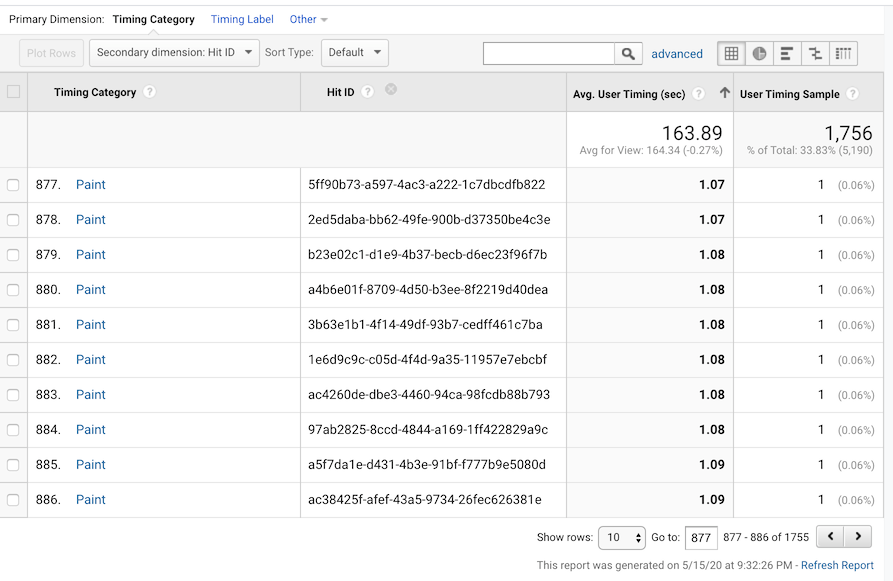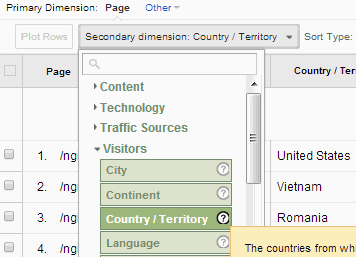Secondary Dimension in Google Analytics: Unlocking Advanced Metrics
Secondary Dimension in Google Analytics: Unlocking Advanced Metrics
Blog Article
Unlock Deeper Insights With Additional Measurement in Google Analytics
With the vast area of information available in Google Analytics, the utilization of additional dimensions can significantly improve your logical abilities. By purposefully incorporating secondary measurements into your analysis, you can discover beneficial insights that could otherwise remain obscure - Secondary Dimension in Google Analytics.
Comprehending Primary Vs. Additional Measurements
When evaluating information in Google Analytics, it is important to compare main and secondary measurements to get much deeper understandings into user behavior. Main dimensions are the major classifications through which you can see your data, such as landing, source/medium, or gadget web page. These measurements provide the basic structure for arranging and recognizing your information. On the various other hand, second measurements allow you to additional study your key measurement data. By including a secondary measurement, you can layer on additional info to your main dimension, allowing a much more granular analysis. If your key measurement is the source/medium with which users got here on your site, adding a second dimension like geographical area can expose where those individuals are situated geographically. This included layer of info can assist you determine patterns, patterns, or anomalies that may not have been apparent when looking at the key measurement alone. Leveraging both key and secondary dimensions in Google Analytics is crucial for detailed information analysis and notified decision-making.
Utilizing Secondary Dimensions Successfully
By incorporating secondary measurements together with main measurements, analysts and online marketers can dive much deeper right into the specifics of customer interactions on their internet sites. Second dimensions enable customers to sector and filter key measurement data even more, offering a much more detailed sight of customer actions, communications, and demographics.
Moreover, additional measurements make it possible for individuals to compare and contrast different data factors within a solitary report, assisting in an extra thorough analysis of individual actions patterns. By leveraging second measurements efficiently, companies can uncover concealed understandings, maximize their advertising and marketing methods, and improve the general customer experience on their web sites.
Discovering Typical Additional Measurement Combinations
To additionally analyze individual actions and patterns in Google Analytics, it is valuable to explore usual combinations of second dimensions. By combining different additional measurements, analysts and online marketers can gain much deeper insights right into exactly how numerous variables affect and connect website performance. Some typical additional measurement combinations that give important understandings consist of analyzing traffic resources with user locations to comprehend where web site site visitors are coming from geographically and exactly how they discovered the website. Likewise, combining touchdown pages with devices can expose which pages execute best on different gadgets, assisting in optimizing the site for much better user experience. Analyzing customer habits metrics with additional measurements such as rate of interests or demographics can help in targeting certain audience sectors extra efficiently. By checking out these usual additional measurement mixes, organizations can reveal covert patterns, identify chances for improvement, and make data-driven decisions to improve their on the internet visibility.
Using Additional Measurement in Custom-made News
Using secondary dimensions in custom-made reports permits a more detailed analysis of data in Google Analytics, enhancing the deepness of understandings obtained. When creating personalized reports in Google Analytics, incorporating second dimensions can provide an extra thorough view of how different dimensions engage with each other. This function allows individuals to dig much deeper into their information and discover valuable relationships that might not be instantly obvious.
By applying second measurements in custom records, users can get a better understanding of their internet site or app web traffic. Combining the primary dimension of "source/medium" with the additional dimension of "landing page" can disclose which landing pages are performing best for traffic coming from particular sources. This understanding can aid marketing experts optimize their campaigns and enhance overall conversion prices.

Enhancing Data Visualization With Additional Dimension
When exploring data in Google Analytics personalized records, integrating additional dimensions not only offers a much more thorough evaluation but also improves the visual representation of understandings their website with data visualization. By including a second dimension to your reports, you can improve the method data exists, making it simpler to identify patterns, trends, and correlations within your internet site's efficiency metrics.
Secondary measurements can help you section your data further, enabling a much deeper understanding of individual habits and communications on your website. When trying to separate specific variables that might affect your internet site's efficiency., this improved degree of granularity can be especially helpful.

Final Thought
Finally, leveraging secondary dimensions in Google Analytics enables a much more detailed evaluation of information, causing much deeper understandings and even more enlightened decision-making. Secondary Dimension in Google Analytics. By adding added layers of information to main information sets, analysts and marketing professionals can uncover surprise trends, patterns, and relationships that supply a granular sight of individual actions and communications. This improved degree of understanding allows optimization of projects and tailored strategies for certain audience sections, inevitably enhancing performance and conversion rates
On the other hand, second dimensions permit you to further explore your key dimension information. By adding a second measurement, you can layer on extra details to your main measurement, making it possible for an extra granular analysis. If your primary measurement is the source/medium via which users showed up on your site, adding a secondary measurement like geographic location can reveal where those users are located geographically. By incorporating additional dimensions together with primary measurements, marketers and analysts can dive deeper right into the specifics of blog individual interactions on their sites. Additional dimensions allow customers to sector and filter key measurement data additionally, supplying a much more thorough sight of user actions, demographics, and communications.
Report this page